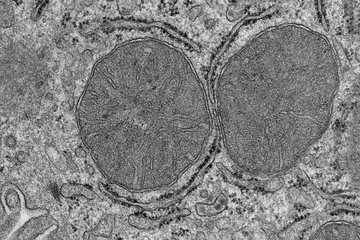Flies process attractive and deterrent odours in different brain areas
Newly developed analytic device Flywalk allows accurate studies of insect behaviour to be made

Flywalk can exactly measure the responses of insects to odour signals. If insects run upwind, i.e. against the direction of the airstream, the odour is rated as attractive; if they stop or run downwind, the odour is deterrent. The system allows the use of not only single odorants but also odour mixtures. In addition, odour pulses of varying length and concentration can be given. The high throughput and the long automated measurement periods − the insects can stay in the Flywalk tubes for up to eight hours − facilitate the statistical analysis of the results.
Experiments with fruit flies demonstrated that females − in contrast to males − are more attracted by typical food odours, such as ethyl acetate. This behaviour seems to reflect the search for the best oviposition place in order to make sure that the larval offspring will find sufficient food after hatching. The response to deterrent odours, such as benzaldehyde, is identical in both males and females. Males, on the other hand, respond positively to the odour of unmated females: If the odour surrounding virgin females was introduced into the Flywalk tubes, the males moved upwind. “This way, we demonstrated for the first time that females, as observed in other insect species, attract their mates with odours. The chemistry of these odorant substances is currently being analysed,” says Kathrin Steck, who carried out the experiments. The substance that renders mated females unattractive to males willing to mate is already known: cis-vaccenyl acetate. With this odour a male "marks" the female during copulation. Thus a male fruit fly prevents further fertilization by other males and makes sure that his genes are spread.

In their study, the scientists measured the activity of so-called projection neurons in the brains of fruit flies. These are located in the antennal lobe, the olfactory centre of flies. Experiments performed with six highly attractive and six highly deterrent odours revealed that attractive and deterrent odours are processed in specific brain regions of the flies as has already been shown in mice and humans. “The function of an insect brain thus resembles that of a mammalian brain more than previously thought,” the researchers write. Because the activity of projection neurons already reflects a kind of “interpretation” of incoming odorant signals, the assessments “good” or “bad” which ultimately regulate the flies’ behaviour seem to be represented early in the insects’ brains.
Activity measurements in the antennal lobes of Lepidopteran species Spodoptera littoralis (Egyptian cotton leafworm) and Spodoptera exigua (beet armyworm), dreaded agricultural pests, have shown that neurons responded very specifically to individual plant odours. These results correspond to the feeding habits of these insects: Both moths infest more than 100 different plant genera, among them many crop plants, and must therefore be able to accurately associate an odour with a particular plant species. In comparison, three specialist species, namely Acherontia atropos (death's-head hawkmoth), Smerinthus ocellata (eyed hawkmoth), and Manduca sexta (tobacco hornworm), seem to have specialized in the recognition of only a few host plants: different odours often generated similar or even identical excitation patterns in the brains of the moths.
JWK/HR













